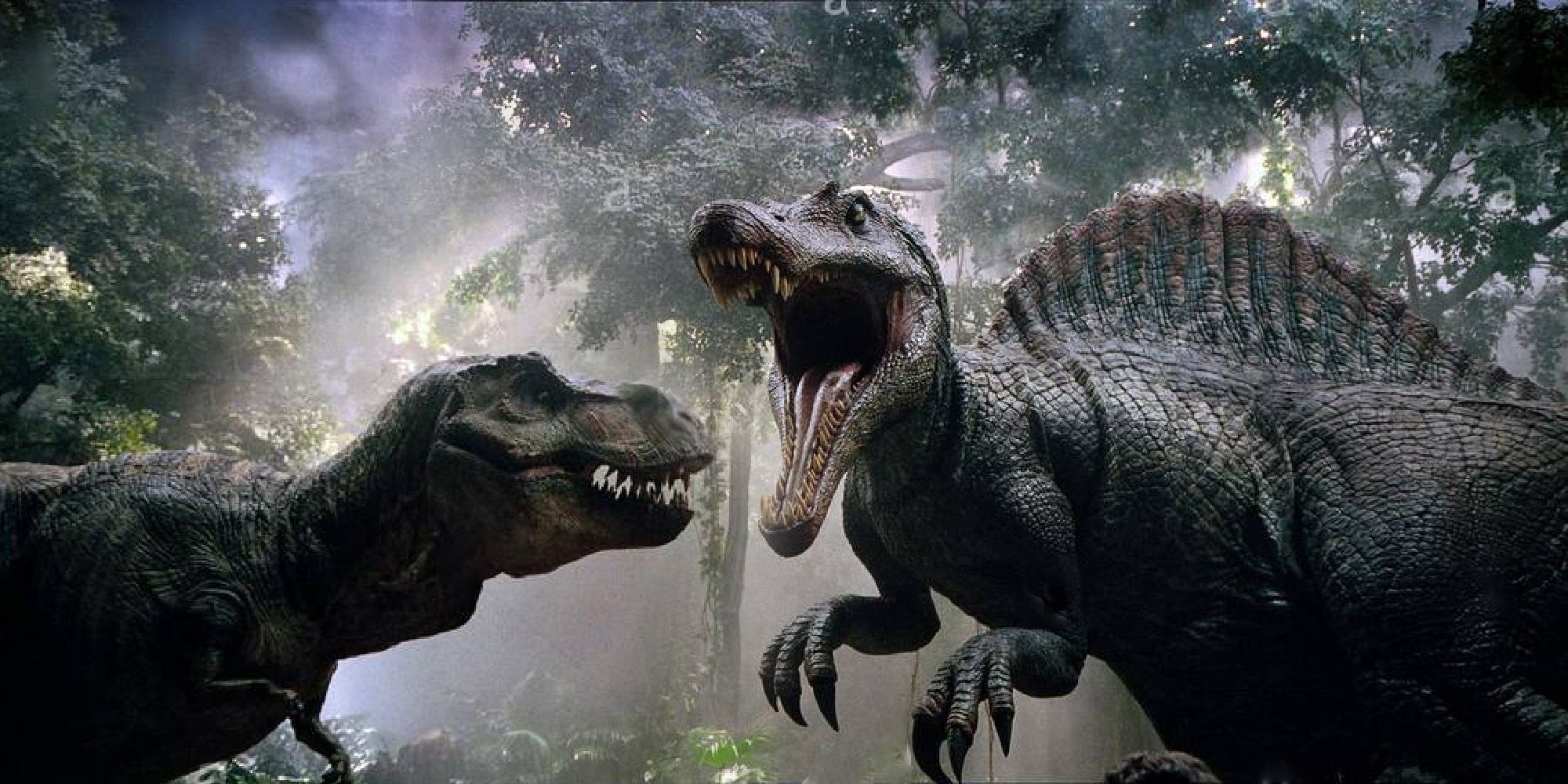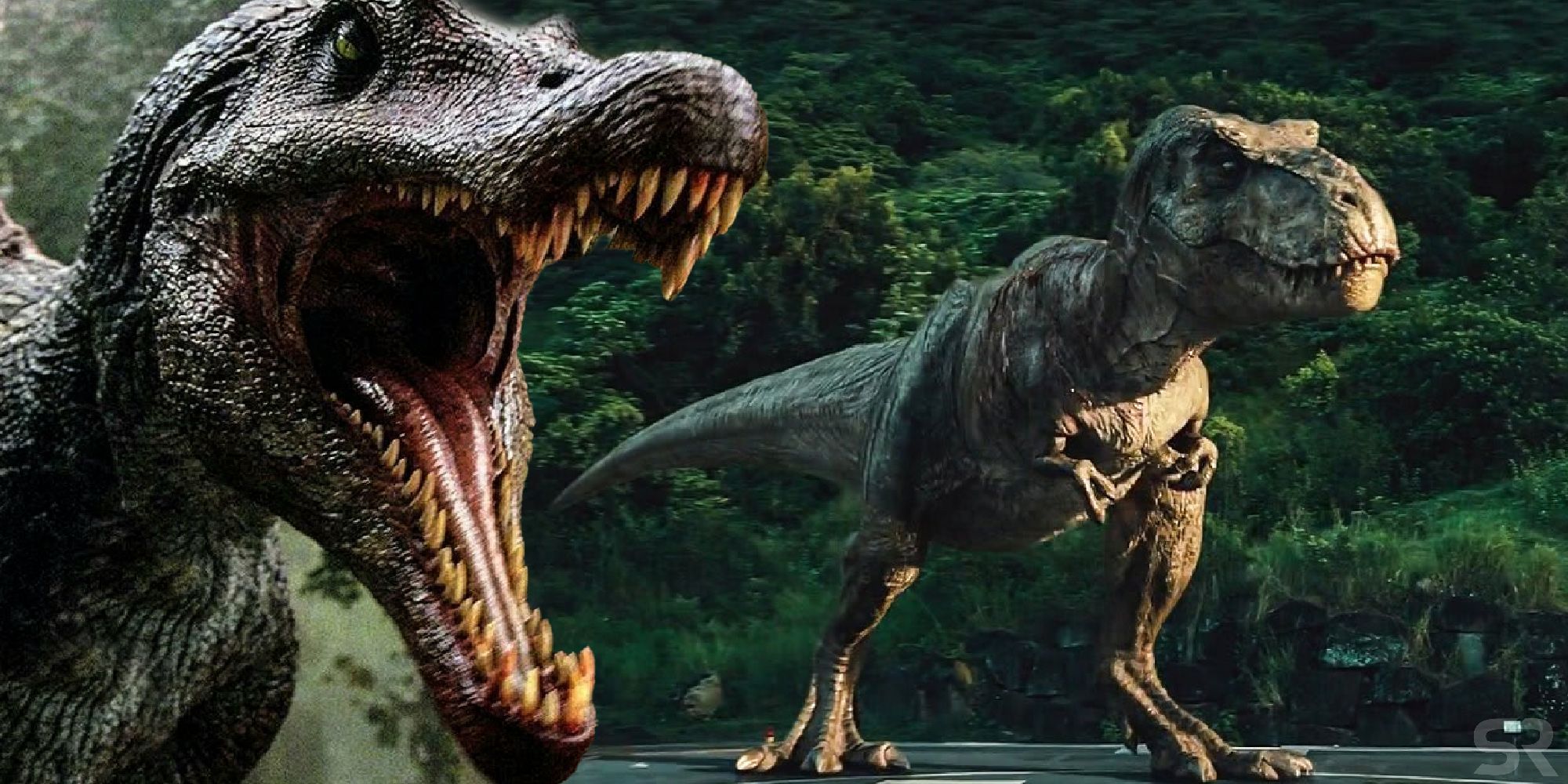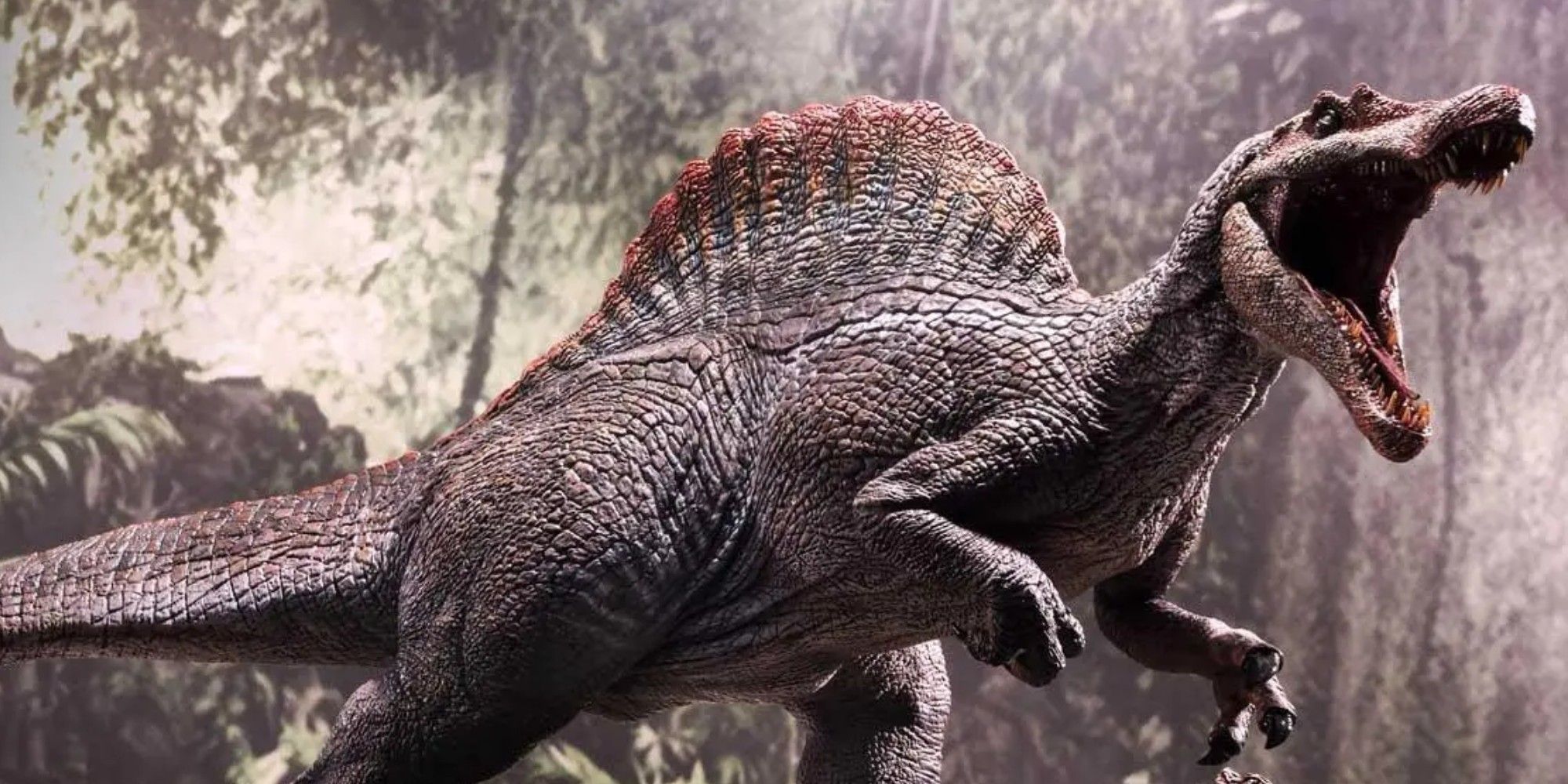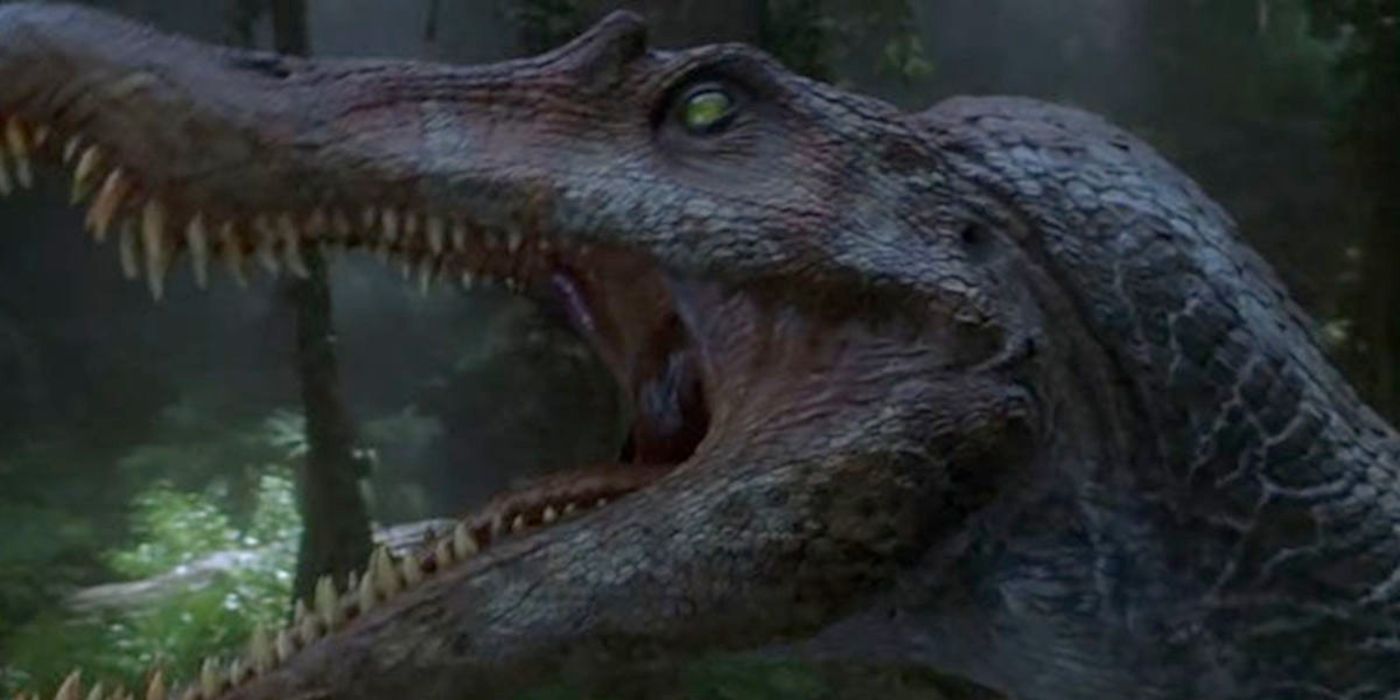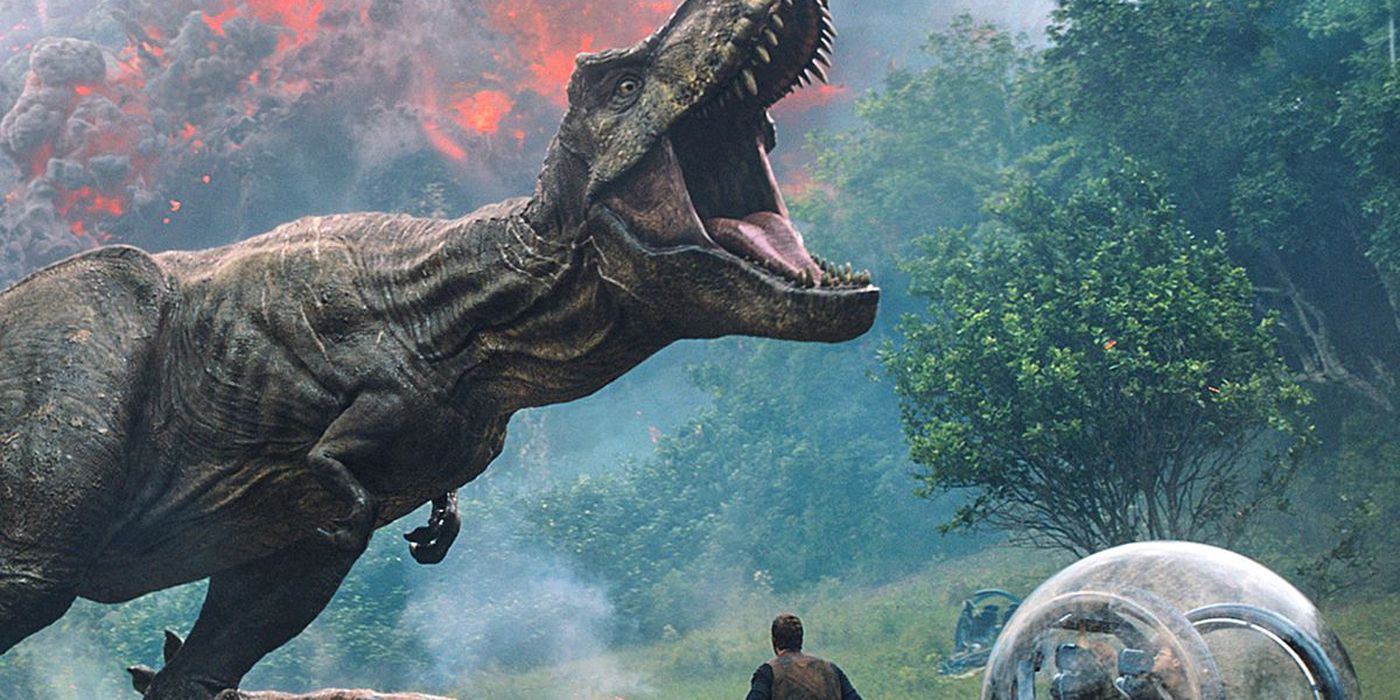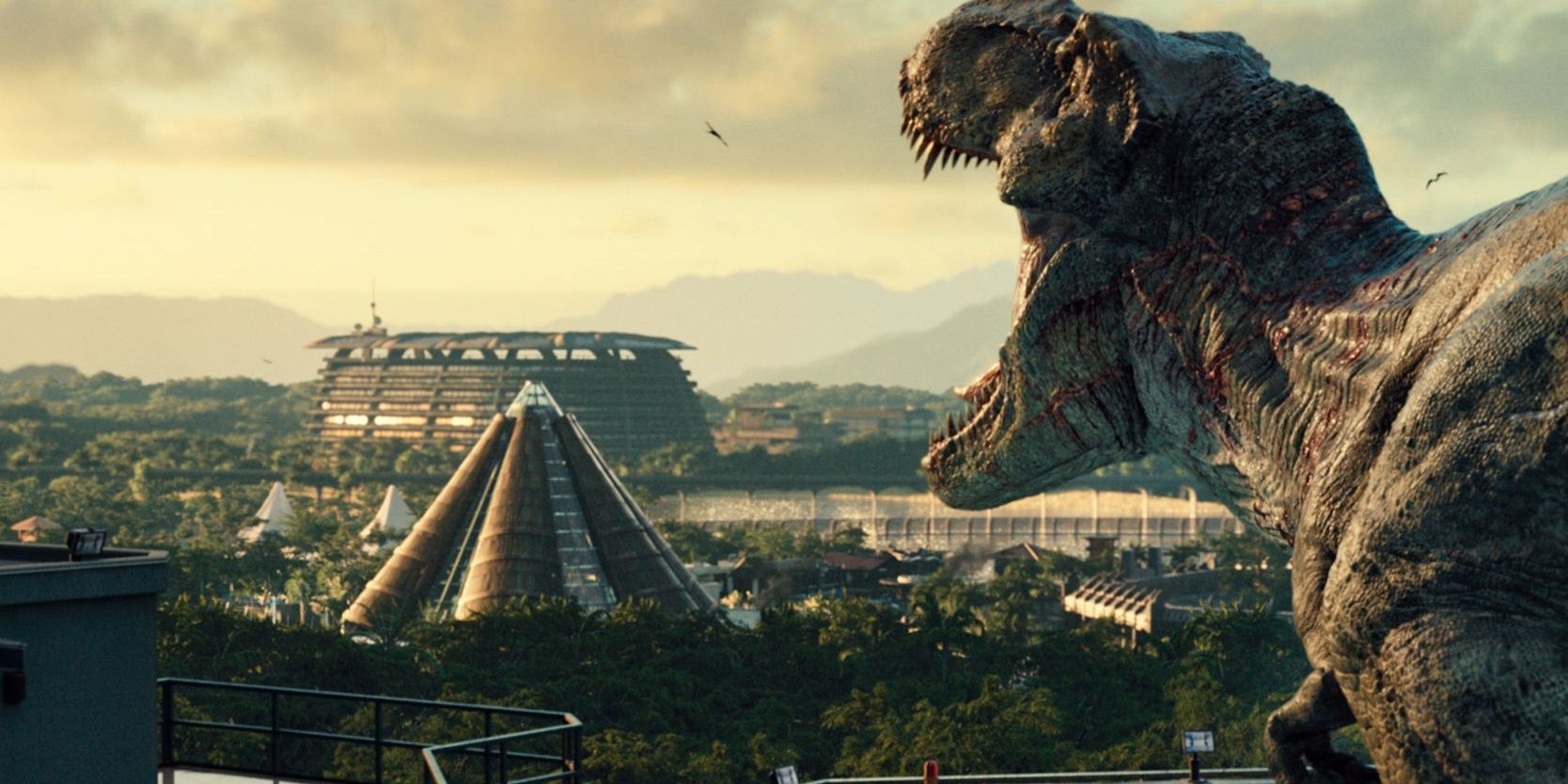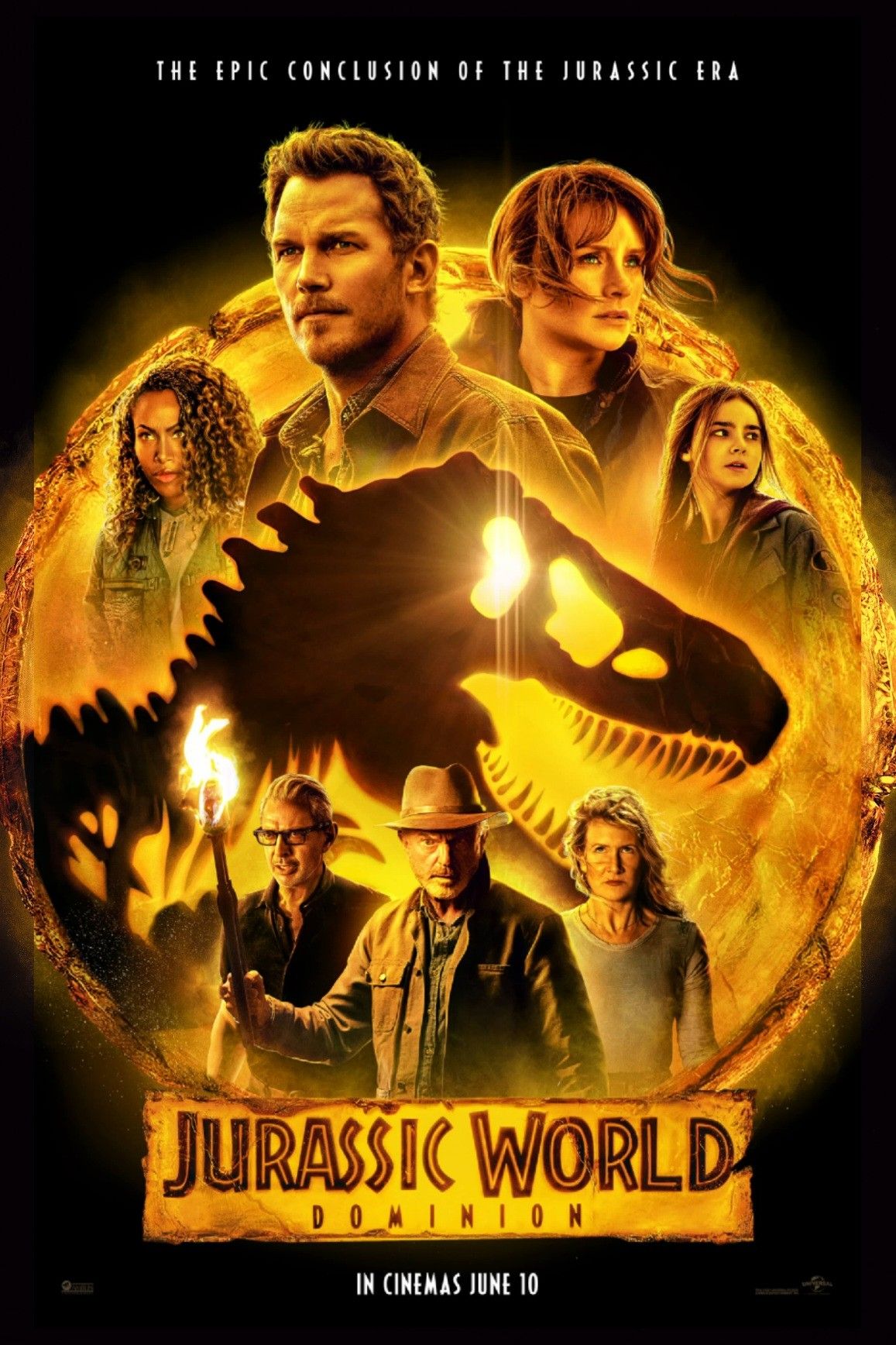In one of the most hated moments of the Jurassic Park franchise, the Jurassic Park 3 Spinosaurus managed to beat a T-Rex in the last installment of the original trilogy, Jurassic Park 3. Since the Spinosaurus is the main source of terror on Isla Sorna in the sequel, it made sense that the ancient lizard would come out of this battle on top. However, it's questionable how accurate the movie's climactic outcome is, no matter how thrilling the filmmakers thought it might have been onscreen.
The battle between the Spinosaurus and the Tyrannosaurus Rex in Jurassic Park 3 is the stuff of legend, but not necessarily for the right reasons. Watching two giant dinosaurs unleash terrifying roars as they thrash, stomp, and charge through a misty tropical jungle might be one of the most awe-inspiring special effects achievements in the franchise's history. And though its T-rex opponent puts up a pretty good fight, the Spinosaurus emerges victorious after it snaps its rival's neck between its jaws. It's a clash of epic proportions featuring two of the dinosaurs in Jurassic Park that were actually real before the franchise turned to gene splicing and mutant dino creations.
Unfortunately, Jurassic Park III's infamous battle is also a scenario that could never happen. Not only did the two predators live and go extinct during separate eras of the Cretaceous period, but they were separated by completely different geographic locations. The Spinosaurus was native to what's now northern Africa, while the T-rex roamed the lands that eventually became western North America. But thanks to Jurassic Park 3's magic, the two titans met. The question, though, is if the sequel called the battle right and whether a Spinosaurus could genuinely beat a T-rex given the criticism in the fanbase suggesting that this would also be impossible. Here's a rundown of each species' strengths and weaknesses and how they might hold up in a battle against one another.
Spinosaurus vs. T-rex: Who Would Win?
How would a T-rex/Spinosaurus showdown go down? One thing's for sure about the Spinosaurus: its impressive biological stats make it an undervalued dinosaur in the Jurassic Park franchise, but not in the way some may think. The predator is downplayed as a hulking apex predator, which is not true and the portrayal removes all nuance. And as for the question of whether it would beat the monstrous Tyrannosaurus Rex in a fight? Concrete answers are hard to come by, because of the differences of opinion in even expert communities, but such a comprehensive victory is basically impossible. Yes, the Spinosaurus was markedly larger than the T-Rex, but it also lacked the muscle and bite power to do any serious damage. Meanwhile, the T-rex had a powerful bite, but it also lacked speed and agility. It's likely that its massive jaws would make up for the difference given that the inaccuracies on show massively exaggerated the Spinosaurus' abilities as this sort of combatant.
Ultimately, a lot of the outcome would be determined by where and how the Jurassic Park 3 battle took place. Each dinosaur has significant advantages when fighting on its own home turf. The T-rex is an iconic favorite of the six dinosaur species from the first Jurassic Park, but it's far from unbeatable. If it was unfortunate enough to cross paths with a Spinosaurus by a river or a lake, a Tyrannosaurus Rex might just end up as the sail-back dinosaur's largest catch of the day. It would be an easy target in any swampy environment, let alone a large body of water. Meanwhile, a Spinosaurus wouldn't stand a chance if the two dinosaurs were to duke it out in the humid and tropical forests where the T-rex reigned as an apex predator, which is precisely why Jurassic Park 3 was so wrong in its outcome.
The Real-Life Spinosaurus Dinosaur Explained
In many ways, the real-life Jurassic Park 3 Spinosaurus was like a supersized, aquatic version of another dinosaur from Jurassic Park's original trilogy: the Velociraptor. The Spinosaurus weighed 13 to 22 tons and measured up to 57 feet long. It was a semi-aquatic species that maneuvered well in wet, swamp-like environments, and thanks to its massive fin-like tail, the Spinosaurus was also incredibly fast in large bodies of water. These dinosaurs also had long arms fitted with sharp claws that ranged from six to eight inches long and could make cuts up to two inches deep. Those arms, however, hung down in order to aid their hunting of fish and claws could not be rotated to grab as is depicted in the Alan Grant-led Jurassic Park 3.
Additionally, the Spinosaurus's jaw was basically useless in a fight. Its conical teeth were well-equipped to grip slippery fish, but were incapable of causing any major damage to other flesh. On top of that, the creature's skull was ill-suited to lateral bending and higher levels of stress, making battle with a traditional bipedal dinosaur like a T-rex almost impossible. And not only that, but the Spinosaurus' short back legs meant it was suited well to water, but wasn't made for long excursions on land or particular agility. The Spinosaurus also had a major design flaw: its weakest point (its spine) was completely exposed. Although the Spinosaurus' sail may have helped scare away potential threats by making it appear bigger, one bad move and it could be paralyzed by its attacker.
How Jurassic Park 3's Spinosaurus Compares To The Real Version
In the soon-to-end Jurassic Park franchise, the Spinosaurus is markedly more intimidating and lethal than the real-life version. Though it would have been impressive to see Jurassic World bring back the Spinosaurus, it probably would not have been an accurate portrayal by any means, given the inaccuracies established in the original trilogy. Most of the dinosaurs featured in the Jurassic Park movies are a product of the limited knowledge scientists and filmmakers have of them at the time of filming, and the Spinosaurus is no exception.
The creature's agility in the film is hugely overplayed: it is too fast, too flexible, and too agile on land, by far. In fact, similarly to the Jaws-like Mosasaur, a real Spinosaurus could encounter problems just by trying to get out of the water in order to catch a smaller prey, so venturing out to chomp down on the most famously savage dinosaur would have been quite a difficult task. With more recently-found fossil records, scientists have been able to tweak several details about the Spinosaurus. For instance, it's now known that its legs weren't nearly as long as those of the Jurassic Park 3 Spinosaurus, which already had shorter legs than the T-rex. In true Hollywood fashion, Jurassic Park 3 introduced a remarkably huge exemplar, and even though it may have been possible that a real-life Spinosaurus could grow to such size, the sheer stature of this particular specimen may not have been reached by the standard Spinosaurus.
The Spinosaurus vs. The T-Rex In Real Life
Some shots in Jurassic Park 3 show that the Spinosaurus' fangs were just as long, if not longer, than those of a T-rex, which was simply not the case. The T-rex had some of the largest teeth recorded of the meat-eating dinosaurs, reaching a huge 12 inches in length. Meanwhile, the Spinosaurus's teeth were a little more than three inches long at most. But perhaps the biggest difference between the movie's Spinosaurus and the real-life Spinosaurus is the force of its bite.
In Jurassic Park 3, the Spinosaurus easily defeated the T-rex by clenching its neck tightly between its jaws. While this might be possible with a smaller organism, it's unlikely that a Spinosaurus would be able to do that with a dinosaur as robust and muscular as a T-rex. Though the Spinosaurus had an impressive bite force of 2 tons, its teeth would have been too small and dull to grab hold of a T-rex's neck long enough to bite down on it, let alone break it in half. Of course, Jurassic Park's depiction of the Tyrannosaurus Rex can't be described as perfectly accurate either, as recent findings — which suggest the T-rex could have been covered in feathers — have modified the way we see the King of the Dinosaurs as well. However, these small changes are unlikely to change the outcome of the battle between the T-rex and the Spinosaurus due to the very nature of their species and the environment they inhabited.
Any pathway to victory would require a lot of power and coordination from the Spinosaurus, which was not a species known for its brains. After all, even in-universe, Dr. Alan Grant — one of the legacy characters returning for Jurassic World: Dominion — was able to scare one off by igniting boat fuel and setting the path in front of it on fire. If a Spinosaurus and a Tyrannosaurus Rex were to go head-to-head under the same circumstances shown in Jurassic Park 3, it's certain that the iconic T-rex would come out on top. Its slight disadvantage of size would easily be made up for by its strength and lethal bite power. What happens in the film is definitely a product of movie magic, but at least the battle's creativity continues to inspire amazement and wonder.
How Jurassic Park 3's T-rex Compares To The Real Version
With a bit of movie magic, the Jurassic Park series brought the most well-known dinosaur specimen, the T-Rex, to life. However, like any movie, studios took some liberties when it came to the dino's appearance. The T-Rex is a massive dinosaur, and in Jurassic Park 3, it looks comparable in size to its Spinosaurus foe, but it doesn't come out so well in a real-life Spinosaurus vs. T-rex size comparison. The Spinosaurus measures out to be about 15 meters (around 49 feet) long, with a weight anywhere from 26,000 to 44,000 pounds. The T-Rex, on the other hand, only measures 12.3 meters long (close to 40 feet), with the largest specimen weighing around 12,400 pounds. Therefore, a T-Rex is not very comparable in mass when looking at the Spinosaurus, who outweighs the T-Rex by about 14,000 pounds. There's also no telling what age the T-Rex was in Jurassic Park 3, as until they reach 14 years old, they only weigh about 4,000 pounds. So, the dinosaur featured at the end of the movie must have been a full-blown adult.
In addition to making the T-Rex as big as the Spinosaurus, the dinosaur's appearance wasn't wholly accurate. The debate rages on as to whether or not the Tyrannosaurus was covered in feathers. This comes from the discovery of filamentous structures (precursors to feathers) found on the tyrannosauroid known as the Dilong paradoxus. Some studies have also suggested that the T-Rex has lips that cover its teeth, rather than the crocodile-type mouth that most movies depict. Another interesting fact is that the T-Rex's small arms were actually capable of lifting almost 500 lbs. The arms themselves may not have been used defensively, but they weren't completely useless. Despite all of these inconsistencies, the posturing of the dinosaur is said to be as close as possible to the real thing.
Jurrasic Park 3 also depicts the T-Rex running in short bursts. While the Tyrannosaurus is capable of going up to around 20 miles per hour (32 km/h), this is probably the fastest that the dino could go. Compared to other predators like the Carnotaurus or the Gigantosaurus, this is pretty slow. In addition, the dinosaur wasn't known for running long distances, however, it did walk far and often. While Jurrasic Park tries to be scientifically correct with its depiction of dinosaurs, some of the creatures don't measure up to their real-life counterparts.

